<Back to Index>
- Mathematician Marie Ennemond Camille Jordan, 1838
- Physicist and Mathematician Josiah Willard Gibbs, 1839
PAGE SPONSOR
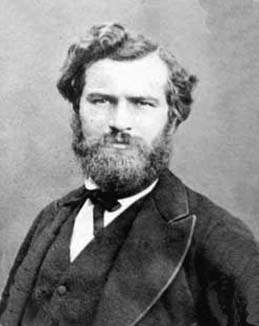
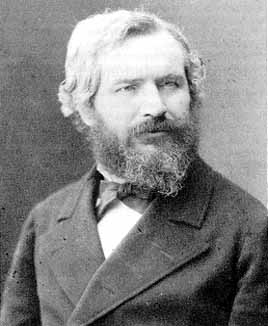
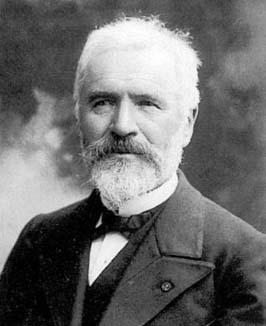
Marie Ennemond Camille Jordan (January 5, 1838 – January 22, 1922) was a French mathematician, known both for his foundational work in group theory and for his influential Cours d'analyse. He was born in Lyon and educated at the École polytechnique. He was an engineer by profession; later in life he taught at the École polytechnique and the Collège de France, where he had a reputation for eccentric choices of notation.
He is remembered now by name in a number of foundational results:
- The Jordan curve theorem, a topological result required in complex analysis;
- The Jordan normal form and the Jordan matrix in linear algebra;
- In mathematical analysis, Jordan measure (or Jordan content) is an area measure that predates measure theory;
- In group theory the Jordan - Hölder theorem on composition series is a basic result;
- Jordan's theorem on finite linear groups.
Jordan's work did much to bring Galois theory into the mainstream. He also investigated the Mathieu groups, the first examples of sporadic groups. His Traité des substitutions, on permutation groups, was published in 1870.
The asteroid 25593 Camillejordan and Institute of Camille Jordan are named in his honor.
Camille Jordan is not to be confused with the geodesist Wilhelm Jordan (Gauss - Jordan elimination) or the physicist Pascual Jordan (Jordan algebras).
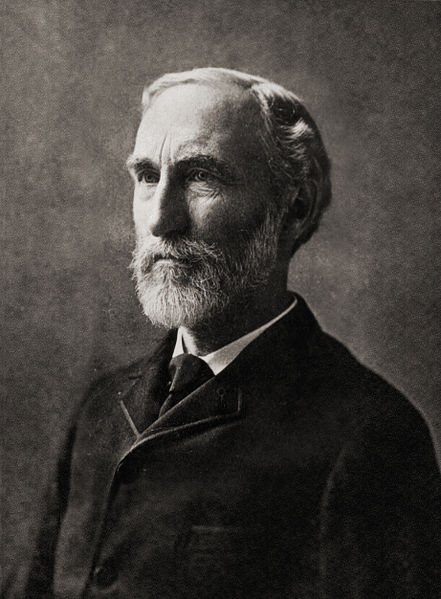
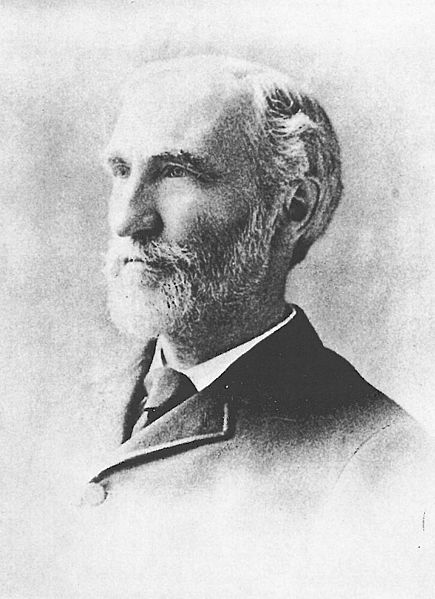
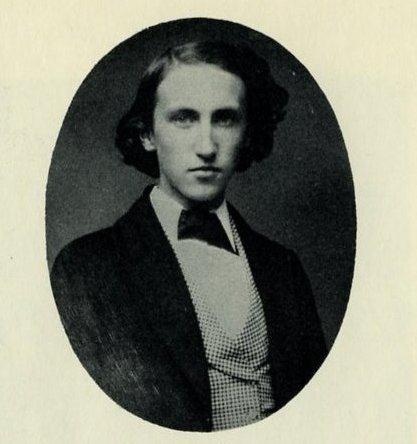
Josiah Willard Gibbs (February 11, 1839 – April 28, 1903) was an American scientist who made important theoretical contributions to physics, chemistry and mathematics. His work on the applications of thermodynamics was instrumental in transforming physical chemistry into a rigorous deductive science. Together with James Clerk Maxwell and Ludwig Boltzmann, he created statistical mechanics (a term which he coined), explaining the laws of thermodynamics in terms of the statistical properties of large ensembles of particles. As a mathematician, he invented modern vector calculus (independently of Oliver Heaviside).
In 1863, Yale University awarded Gibbs the first American doctorate in engineering. After a three year sojourn in Europe, Gibbs spent the rest of his career at Yale, where he was professor of mathematical physics. Working in relative isolation, he became the earliest theoretical scientist in the United States to earn an international reputation and was praised by Albert Einstein as "the greatest mind in American history." In 1901 Gibbs received what was then considered the highest honor awarded by the international scientific community, the Copley Medal of the Royal Society of London, "for his contributions to mathematical physics."
Gibbs was the fourth of the five children, and the only son, of Josiah Willard Gibbs, a linguist and theologian who was professor of sacred literature at Yale Divinity School from 1824 to 1861, and his wife Mary Anna, née Van Cleve. The father, an active abolitionist, is now remembered chiefly for finding an interpreter for the African passengers of the ship Amistad, which allowed them to testify during the trial that followed their rebellion against being sold as slaves.
Gibbs belonged to a long line of American academics and clergymen that stretched back to the 17th century. On his father's side, he was descended from Samuel Willard, who served as acting President of Harvard University from 1701 to 1707. On his mother's side, one of his ancestors was the Rev. Jonathan Dickinson, who was the first president of the College of New Jersey (later Princeton University). His given name, which he shared with his father and several other members of his extended family, derived from his ancestor Josiah Willard, who had been Secretary of the Province of Massachusetts Bay in the 18th century.
Gibbs was educated at the Hopkins School and entered Yale College in 1854, at the age of 15. He graduated in 1858 near the top of his class, and was awarded prizes for excellence in mathematics and Latin. He remained at Yale as a graduate student at the Sheffield Scientific School. At the age of 19, soon after his graduation for college, Gibbs was inducted into the Connecticut Academy of Arts and Sciences, a scholarly institution composed primarily of members of the Yale faculty. Both at the University and within the Academy, Gibbs's principal mentor and champion appears to have been the astronomer Hubert Anson Newton, a leading authority on the subject of meteors.
After the death of his father in 1861, Gibbs inherited enough money to make him financially independent. He suffered from recurrent pulmonary trouble as a young man and his doctors were concerned that he might be susceptible to tuberculosis, which had killed his mother. This, as well as a defect in his eyesight, probably explain why he did not volunteer to fight in the Civil War of 1861 - 65. His name was never reached by the Connecticut draft and he remained at Yale as a graduate student for the duration of the war.
In 1863, Gibbs received the first Ph.D. degree in engineering granted in the US, for a thesis entitled "On the Form of the Teeth of Wheels in Spur Gearing," in which he used geometrical techniques to investigate the optimum design for gears. After graduation, Gibbs was appointed as tutor at the College for a term of three years. During the first two years he taught Latin and during the third Natural Philosophy (i.e., physics). In 1866 he patented a design for a railway brake and read a paper before the Connecticut Academy, entitled "The Proper Magnitude of the Units of Length," in which he proposed a scheme for rationalizing the system of units of measurement used in mechanics.
After his term as tutor ended, Gibbs traveled to Europe with his sisters, spending the winter of 1866 - 67 in Paris, where he attended lectures at the Sorbonne and the Collège de France. From there he went to Berlin, where he attended the lectures of Magnus, and to Heidelberg, where he was exposed to the scientific work of Kirchhoff and Helmholtz. At the time, German academics were the leading authorities in chemistry, thermodynamics, and natural science in general. Gibbs returned to Yale in June 1869. Except for his customary summer vacations in the Adirondacks (at Keene Valley, New York) and later at the White Mountains (in Intervale, New Hampshire), those three years were almost the only time that Gibbs ever spent outside New Haven.
Upon his return from Europe, Gibbs briefly taught French to Yale engineering students. It was probably also around this time that he worked on a new design for a steam engine governor, which seems to have been his last significant investigation in mechanical engineering. In 1871 he was appointed Professor of Mathematical Physics at Yale, the first such professorship in the United States. His position was unpaid, a situation common in Germany and otherwise not unusual at the time, as Gibbs, who had independent means, had yet to publish anything.
Gibbs's first published work, which appeared in 1873 when he was already 34 years old, was on the geometric representation of thermodynamic quantities. That work appeared in the Transactions of the Connecticut Academy, which had few readers capable of understanding Gibbs's work, but he shared reprints with his correspondents in Europe and received a particularly favorable response from Maxwell, who made three plaster casts illustrating Gibbs's construct with his own hands and mailed one to Gibbs. That model is still on display at the Yale physics department.
Between 1875 and 1878 Gibbs wrote a series of papers applying his graphical techniques of thermodynamic analysis to multi - phase chemical systems. These were collected as a long monograph titled "On the Equilibrium of Heterogeneous Substances," which is now deemed to be one of the greatest scientific achievements of the 19th century and one of the foundations of both physical chemistry and statistical mechanics. In that work Gibbs rigorously and ingeniously applied the concepts of thermodynamics to the interpretation of physico - chemical phenomena, successfully explaining and interrelating what had previously been a mass of isolated facts.
It is universally recognized that its publication was an event of the first importance in the history of chemistry... Nevertheless it was a number of years before its value was generally known, this delay was due largely to the fact that its mathematical form and rigorous deductive processes make it difficult reading for anyone, and especially so for students of experimental chemistry whom it most concerns...— J J O'Connor and E F Robertson
Gibbs continued to work without pay until 1880, when the new Johns Hopkins University in Baltimore, Maryland, offered him a position paying $3,000 per year. In response, Yale gave him a salary of $2,000, which he was content to accept.
From 1880 to 1884, Gibbs worked on developing the exterior algebra of Hermann Grassmann into a vector calculus well suited to the needs of physicists. This work was carried out independently, and at around the same time, by the British mathematical physicist and engineer Oliver Heaviside. In the course of this effort, Gibbs introduced the concept of dyadics and he sought to convince other physicists of the convenience of his approach over the quaternionic calculus of William Rowan Hamilton, which was then in widespread use by British scientists. This led, in the early 1890s, to a controversy with Peter Guthrie Tait and others in the pages of Nature.
Gibbs's lecture notes on vector calculus were privately printed in 1881 and 1884 for the use of his students, and were later adapted by Edwin Bidwell Wilson into a textbook, Vector Analysis, published in 1901. That book helped to popularize the notation that is widely used today in electrodynamics and fluid mechanics (see del operator). In other mathematical work, he re-discovered the "Gibbs phenomenon" in the theory of Fourier series (which, unbeknownst to him and to later scholars, had been described fifty years before by an obscure English mathematician, Henry Wilbraham).
From 1882 to 1889, Gibbs wrote five papers on physical optics, in which he investigated birefringence and other optical phenomena and defended Maxwell's electromagnetic theory of light against the mechanical theories of Kelvin and others. In his work on optics just as much as in his work on thermodynamics, Gibbs deliberately avoided speculating about the microscopic structure of matter, which proved a wise course in view of the revolutionary developments in quantum mechanics that began around the time of his death.
Gibbs coined the term "statistical mechanics" and introduced key concepts in the corresponding mathematical description of physical systems, including the notions of chemical potential (1876), statistical ensemble (1878), and phase space (1901). Gibbs's derivation of the phenomenological laws of thermodynamics from the statistical properties of systems with many particles was presented in his highly influential textbook Elementary Principles in Statistical Mechanics, published in 1902, a year before his death.
Gibbs had few students and his retiring personality and intense focus on his scientific work were such that he was generally unavailable personally. He did supervise the doctoral thesis on mathematical economics written by Irving Fisher in 1891, and after Gibbs's death Fisher financed the publication of his Collected Works. Another student was future radio pioneer Lee De Forest. Gibbs's principal protégé was Edwin Bidwell Wilson, who nonetheless explained that "except in the classroom I saw very little of Gibbs. He had a way, toward the end of the afternoon, of taking a stroll about the streets between his study in the old Sloane Laboratory and his home — a little exercise between work and dinner — and one might occasionally come across him at that time."
Gibbs died in New Haven, aged 64, the victim of an acute intestinal obstruction. He is buried in Grove Street Cemetery.
Gibbs never married, living all his life in his childhood home with his sister Julia and her husband Addison Van Name, who was the Yale librarian. According to Paul Samuelson, Gibbs generally voted for the Republican candidate in presidential elections, but supported Grover Cleveland, a conservative Democrat. Gibbs joined Yale's College Church (a Congregational church) at the end of his freshman year and remained a regular attendant for the rest of his life. Otherwise very little is known of his political or religious views, which he kept to himself.
Gibbs was a careful investor and financial manager, and at his death in 1903 his estate was valued at $100,000. He served for many years as trustee, secretary, and treasurer of his alma mater, the Hopkins School. US President Chester A. Arthur appointed him as one of the commissioners to the National Conference of Electricians, which convened in Philadelphia in September of 1884, and Gibbs presided over one of its sessions.
According to Lynde Wheeler, Gibbs in his later years
was always neatly dressed, usually wore a felt hat on the street, and never exhibited any of the physical mannerisms or eccentricities sometimes thought to be inseparable from genius [...] His manner was cordial without being effusive and conveyed clearly the innate simplicity and sincerity of his nature.— Lynde Wheeler, 1951
In an obituary published in the American Journal of Science, Gibbs's former student Henry A. Bumstead referred to Gibbs's personal character:
Unassuming in manner, genial and kindly in his intercourse with his fellow - men, never showing impatience or irritation, devoid of personal ambition of the baser sort or of the slightest desire to exalt himself, he went far toward realizing the ideal of the unselfish, Christian gentleman. In the minds of those who knew him, the greatness of his intellectual achievements will never overshadow the beauty and dignity of his life.—H. A. Bumstead, 1903
Gibbs's papers from the 1870s introduced the idea of expressing the internal energy U of a system in terms of the entropy S, in addition to the usual state variables of V (volume), p (pressure), and T (temperature). He also introduced the concept of the chemical potential ![]() of a given chemical species, defined to be the rate of the increase in U associated with the increase in the number N
of molecules of that species (at constant entropy and volume). Thus, it
was Gibbs who first combined the first and second laws of
thermodynamics by expressing the infinitesimal change in the energy of a
system in the form:
of a given chemical species, defined to be the rate of the increase in U associated with the increase in the number N
of molecules of that species (at constant entropy and volume). Thus, it
was Gibbs who first combined the first and second laws of
thermodynamics by expressing the infinitesimal change in the energy of a
system in the form:
![]()
where the sum in the last term is over the different chemical species. By Legendre - transforming this expression, he defined the concepts of enthalpy and "free energy" (now universally known as the "Gibbs free energy"), a thermodynamic potential which is especially useful to chemists since it determines whether a reaction will proceed spontaneously at a fixed temperature and pressure. In the same way he also obtained what is now known as the "Gibbs – Duhem equation."
The publication of the paper "On the Equilibrium of Heterogeneous Substances" (1875-8) is now regarded as a landmark in the development of physical chemistry. That paper formulated the phase rule for the number of variables that can be controlled in a heterogeneous mixture in equilibrium (also phase diagram). It also developed a rigorous mathematical theory for various transport phenomena, including electrochemical processes and the Marangoni effect in fluid mixtures.
Gibbs introduced the now common notation for the dot product and the cross product of two vectors, and he was largely responsible for the development of the vector calculus techniques still used today in electrodynamics and fluid mechanics. As Gibbs had advocated in the 1880s and 1890s, Hamilton's quaternions were eventually all but abandoned by physicists in favor of the approach developed by him and, independently, by Oliver Heaviside. Gibbs also applied his vector methods to the determination of planetary and comet orbits, and he developed the concept of mutually reciprocal triads of vectors which later proved to be of importance in crystallography.
Together with James Clerk Maxwell and Ludwig Boltzmann, Gibbs is considered one of the founders of statistical mechanics. It was Gibbs who coined the term "statistical mechanics" to identify the branch of theoretical physics that accounts for the observed thermodynamic properties of systems in terms of the statistics of large ensembles of particles. He introduced the concept of phase space and used it to define the microcanonical, canonical, and grand canonical ensembles, thus obtaining a more general formulation of the statistical properties of many - particle systems than what had been achieved previously by Maxwell and Boltzmann.
Gibbs was well aware that the application of the equipartition theorem to large systems of classical particles failed to explain the measurements of the specific heats of both solids and gases, and he argued that this was evidence of the danger of basing thermodynamics on "hypotheses about the constitution of matter." Gibbs's own framework for statistical mechanics was so carefully constructed that it could be carried over almost intact after the discovery that the microscopic laws of nature obey the rules of quantum mechanics, rather than the classical mechanics known to Gibbs and to his contemporaries. His resolution of the so-called "Gibbs paradox," about the entropy of the mixing of gases, is now often cited as a prefiguration of the indistinguishability of particles required by quantum mechanics.
Though Gibbs's research on physical optics is less well known today than his other work, it made a significant contribution to classical electromagnetism by applying Maxwell's equations to the theory of optical processes such as birefringence, dispersion and optical activity. In that work, Gibbs showed that those processes could be accounted for by Maxwell's equations without any special assumptions about the microscopic structure of matter or about the nature of the medium in which electromagnetic waves were supposed to propagate (the so-called luminiferous aether). Gibbs also stressed that the absence of a longitudinal electromagnetic wave, which is needed to account for the observed properties of light, is automatically guaranteed by Maxwell's equations (by virtue of what is now called their "gauge invariance"), whereas in mechanical theories of light, such as Lord Kelvin's, it must be imposed as an ad hoc condition on the properties of the aether.
Gibbs worked at a time when there was little tradition of rigorous theoretical science in the United States. His research was not easily understandable to his students or his colleagues and he made no effort to popularize his ideas or to simplify their exposition to make them more accessible. His seminal work on thermodynamics was published mostly in the Transactions of the Connecticut Academy, a journal edited by his librarian brother - in - law, which was little read in the U.S.A. and even less so in Europe. When Gibbs submitted his long paper on the equilibrium of heterogeneous substances to the Academy, both Elias Loomis and Hubert Anson Newton protested that they did not understand Gibbs's work at all, but they helped to raise the money needed to pay for the typesetting of the many equations and mathematical symbols in the paper. Funds for the purpose were contributed both by members of the university and by local business and professional men in New Haven.
According to James Gerald Crowther,
in his later years [Gibbs] was a tall, dignified gentleman, with a healthy stride and ruddy complexion, performing his share of household chores, approachable and kind (if unintelligible) to students. Gibbs was highly esteemed by his friends, but American science was too preoccupied with practical questions to make much use of his profound theoretical work during his lifetime. He lived out his quiet life at Yale, deeply admired by a few able students but making no immediate impress on American science commensurate with his genius.— J.G. Crowther, 1937
In his autobiography, mathematician Gian - Carlo Rota tells of casually browsing the mathematical stacks of Sterling Library and stumbling on a handwritten mailing list, attached to some of Gibbs's course notes, which listed over two hundred notable scientists of his day, including Poincaré, Hilbert, Boltzmann and Mach. (This mailing list was reproduced by Lynde Wheeler in an appendix to his biography of Gibbs.) One may conclude that Gibbs's work was better known among the scientific elite of his day than the published material suggests. Gibbs succeeded in interesting his European correspondents in that work, which was translated into German (then the leading language for chemistry) by Wilhelm Ostwald in 1892 and into French by Henri Louis Le Châtelier in 1899. His phase rule was experimentally validated by the works of Dutch chemist H.W. Bakhuis Roozeboom, who showed how to apply it in a variety of situations, thereby assuring it of widespread use.
Gibbs did receive the major honors then possible for an academic scientist in the U.S.: he was elected to the National Academy of Sciences in 1879 and was awarded the 1880 Rumford Prize from the American Academy of Arts and Sciences for his work on chemical thermodynamics. Gibbs was also granted honorary doctorates from Princeton University and Williams College in the U.S., and from the universities of Erlangen and Christiania (now Oslo) in Europe. He was inducted as a foreign member of the Royal Society of London in 1897 and received the Society's Copley Medal in 1901. At the time, that was considered the highest international honor in the natural sciences. Gibbs was also a corresponding member of the Prussian and French Academies of Science.
According to American experimental physicist and Nobel laureate Robert A. Millikan,
Gibbs lives because, profound scholar, matchless analyst that he was, he did for statistical mechanics and for thermodynamics what Laplace did for celestial mechanics and Maxwell did for electrodynamics, namely, made his field a well - nigh finished theoretical structure.— R.A. Millikan, 1938
Gibbs's most immediate and obvious influence was on physical chemistry and statistical mechanics, two disciplines which he greatly helped to found. When Dutch physicist J.D. van der Waals received the 1910 Nobel Prize "for his work on the equation of state for gases and liquids" he acknowledged the great influence of Gibbs's work on that subject. Max Planck received the 1918 Nobel Prize for his work on quantum mechanics, particularly his 1900 paper on the quantization of black - body radiation (Planck's law). That work was based largely on the thermodynamics of Kirchhoff, Boltzmann and Gibbs. According to Planck, Gibbs's name "not only in America but in the whole world will ever be reckoned among the most renowned theoretical physicists of all times."
The first half of the 20th century saw the publication of two influential textbooks that soon came to be regarded as founding documents of chemical thermodynamics, both of which used and extended Gibbs's work in that field: these were Thermodynamics and the Free Energy of Chemical Processes (1923), by Gilbert N. Lewis and Merle Randall, and Modern Thermodynamics by the Methods of Willard Gibbs (1933), by Edward A. Guggenheim. Under the influence of Lewis, William Giauque (who had originally wanted to be a chemical engineer) went on to become a professor of chemistry at Berkeley and won the 1949 Nobel Prize in Chemistry for his investigations into the properties of matter at temperatures close to absolute zero, studies guided by the third law of thermodynamics.
Gibbs's work on ensembles and on the ergodic hypothesis, as presented in his 1902 textbook on statistical mechanics, has had a considerable impact in both theoretical physics and in pure mathematics. Initially unaware of Gibbs's contributions in that field, Albert Einstein wrote three papers on statistical mechanics, published between 1902 and 1904. After reading Gibbs's textbook (which was translated into German by Ernst Zermelo in 1905), Einstein declared that Gibbs's treatment was superior to his own and explained that he would not have written those papers if he had known Gibbs's work. According to mathematical physicist Arthur Wightman:
It is one of the striking features of the work of Gibbs, noticed by every student of thermodynamics and statistical mechanics, that his formulations of physical concepts were so felicitiously chosen that they have survived 100 years of turbulent development in theoretical physics and mathematics.— A.S. Wightman, 1990
At Yale, Gibbs was also the mentor of Lee De Forest, who went on to invent the triode amplifier and has been called the "father of radio." According to De Forest, it was thanks to Gibbs that he realized early on "that the leaders in electrical development would be those who pursued the higher theory of waves and oscillations and the transmission by these means of intelligence and power." Another student of Gibbs who played a significant role in the development of radio technology was Lynde Wheeler.
Gibbs also had an indirect influence on mathematical economics. He supervised the thesis of Irving Fisher, who received the first Ph.D. in economics from Yale in 1891. In that work, published in 1892 as Mathematical Investigations in the Theory of Value and Prices, Fisher drew a direct analogy between Gibbsian equilibrium in physical and chemical systems, and the general equilibrium of markets, and he used Gibbs's vectorial notation. Gibbs's protegé Edwin Bidwell Wilson became, in turn, a mentor to leading American economist and Nobel Laureate Paul Samuelson. In 1947, Samuelson published Foundations of Economic Analysis, based on his doctoral dissertation. Samuelson explicitly acknowledged the influence of the classical thermodynamic methods developed by Gibbs, whom he referred to as "Yale's great physicist." For his part, mathematician Norbert Wiener cited Gibbs as a major influence on his conception of cybernetics and explained in his book The Human Use of Human Beings that it was "devoted to the impact of the Gibbsian point of view on modern life, both through the substantive changes it has made to working science, and through the changes it has made indirectly in our attitude to life in general."
When the German physical chemist Walther Nernst visited Yale in 1906 to give the Silliman lecture, he was surprised to discover that there was no tangible memorial for Gibbs. He therefore donated his $500 lecture fee to the university to help pay for a suitable monument, which was finally unveiled in 1912 in the form of a bronze bas relief by sculptor Lee Lawrie, installed in the Sloane Physics Laboratory. In 1910, the American Chemical Society established the Willard Gibbs Medal, through the initiative of William A. Converse, a former chairman and secretary of the Chicago Section. The American Mathematical Society established the Josiah Willard Gibbs Lectureship in 1923 to increase public awareness of mathematics and its applications.
In 1945, Yale University created the J. Willard Gibbs Professorship in Theoretical Chemistry, held until 1973 by Lars Onsager, who won the 1968 Nobel Prize in chemistry. (Onsager, like Gibbs, was involved primarily in the application of new mathematical ideas to problems in physical chemistry.) Yale's J.W. Gibbs Laboratory and J. Willard Gibbs Assistant Professorship in Mathematics are also named in his honor. On February 28, 2003, Yale held a symposium on the centennial of his death. Rutgers University has a J. Willard Gibbs Professorship of Thermomechanics, presently held by Bernard D. Coleman. In 1950, Gibbs was elected to the Hall of Fame for Great Americans. The United States Navy oceanographic research ship USNS Josiah Willard Gibbs (T-AGOR-1), in service from 1958 to 1971, was named for Gibbs.
E.A. Guggenheim introduced the symbol G for the Gibbs free energy in 1933, and the same symbol was used also by Dirk ter Haar in 1966. This notation is now universal and is recommended by the IUPAC. In 1960, William Giauque et al. suggested using the name "gibbs" (abbreviated gbs.) for the unit of entropy, calorie / Kelvin, but this usage did not become common and the corresponding SI unit, Joule / Kelvin, carries no special name.
On May 4, 2005, the United States Postal Service issued the American Scientists commemorative postage stamp series designed by artist Victor Stabin, depicting Gibbs, John von Neumann, Barbara McClintock and Richard Feynman. Kenneth R. Jolls, a professor of chemical engineering at Iowa State University and an expert on graphical methods in thermodynamics, consulted on the design of the stamp honoring Gibbs. The stamp identifies Gibbs as a "thermodynamicist" and features a diagram from the 4th edition of Maxwell's Theory of Heat, published in 1875, which illustrates Gibbs's thermodynamic surface for water (also Maxwell's thermodynamic surface). A microprinting on the collar of Gibbs's portrait depicts his original mathematical equation for the change in the energy of a substance in terms of its entropy and the other state variables.
In 1909, the American historian and novelist Henry Adams finished an essay entitled "The Rule of Phase Applied to History," in which he sought to apply Gibbs's phase rule and other thermodynamic concepts to a general theory of human history. William James, Henry Bumstead, and others criticized both Adams's tenuous grasp of the scientific concepts that he invoked, as well as the arbitrariness of his application of those concepts as metaphors for the evolution of human thought and society. The essay remained unpublished until it appeared posthumously in 1919, in The Degradation of the Democratic Dogma, edited by Henry Adam's younger brother Brooks.
In the 1930s, feminist poet Muriel Rukeyser became fascinated by Willard Gibbs and wrote a long poem about his life and work ("Gibbs," included in the collection A Turning Wind, published in 1939), as well as a book length biography (Willard Gibbs, 1942). According to Rukeyser:
Willard Gibbs is the type of the imagination at work in the world. His story is that of an opening up which has had its effect on our lives and our thinking; and, it seems to me, it is the emblem of the naked imagination — which is called abstract and impractical, but whose discoveries can be used by anyone who is interested, in whatever "field" — an imagination which for me, more than that of any other figure in American thought, any poet, or political, or religious figure, stands for imagination at its essential points.— Muriel Rukeyser, 1949
Both Gibbs and Rukeyser's biography of him figure prominently in the poetry collection True North (1997) by Stephanie Strickland. An official and more technically - oriented biography of Gibbs was published by his former student Lynde Wheeler in 1951.
In fiction, Gibbs appears as the mentor to character Kit Traverse in Thomas Pynchon's novel Against the Day (2006). That novel also prominently discusses the birefringence of Iceland spar, an optical phenomenon investigated by Gibbs.